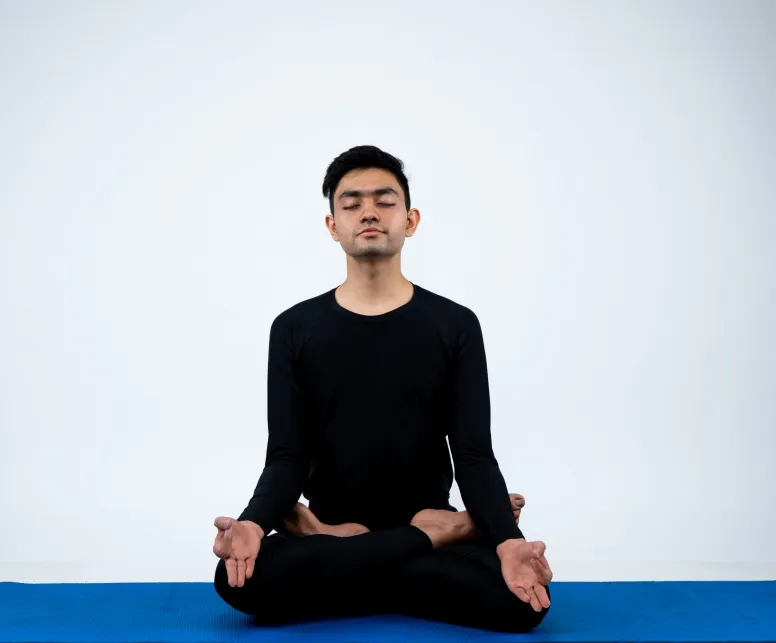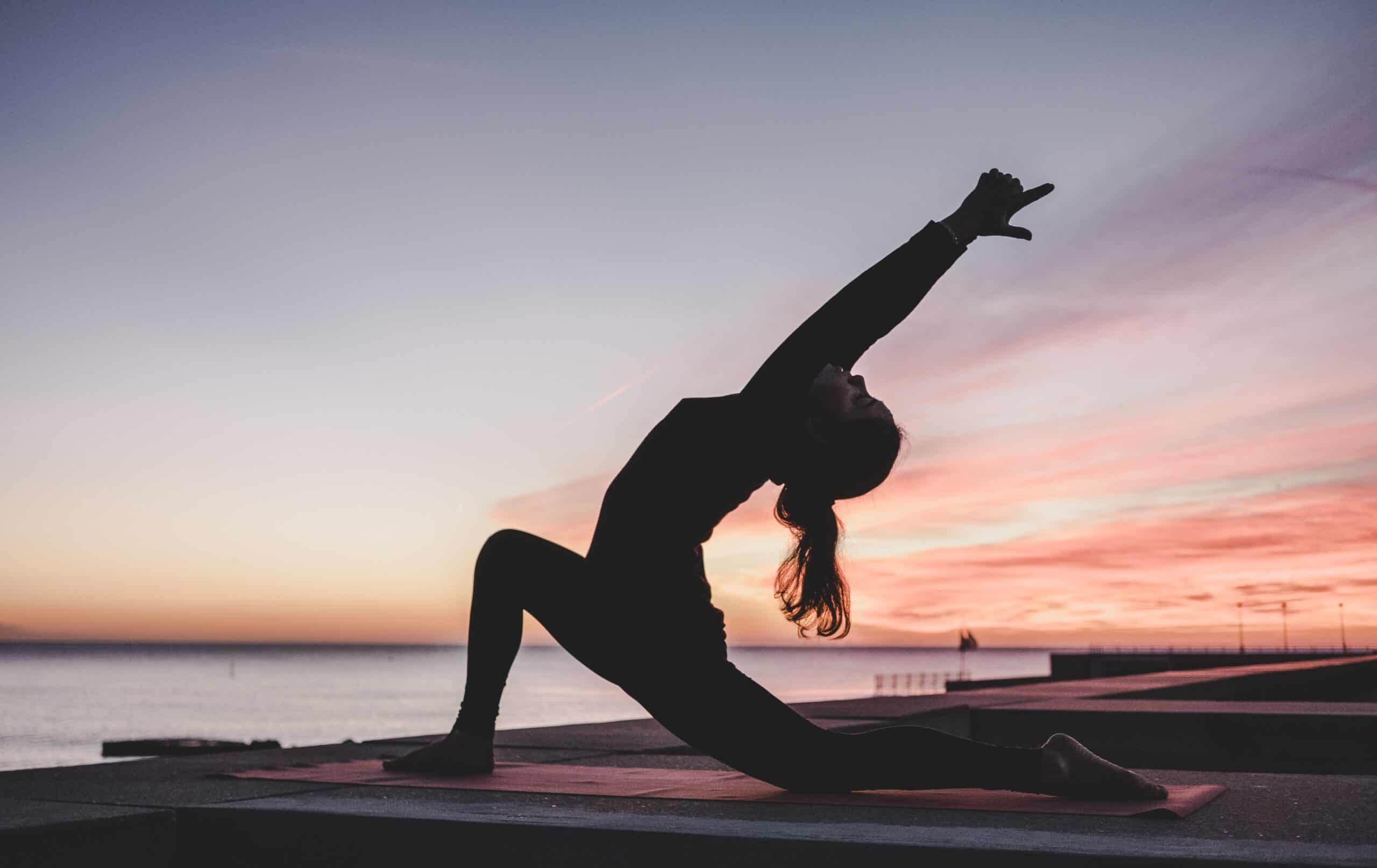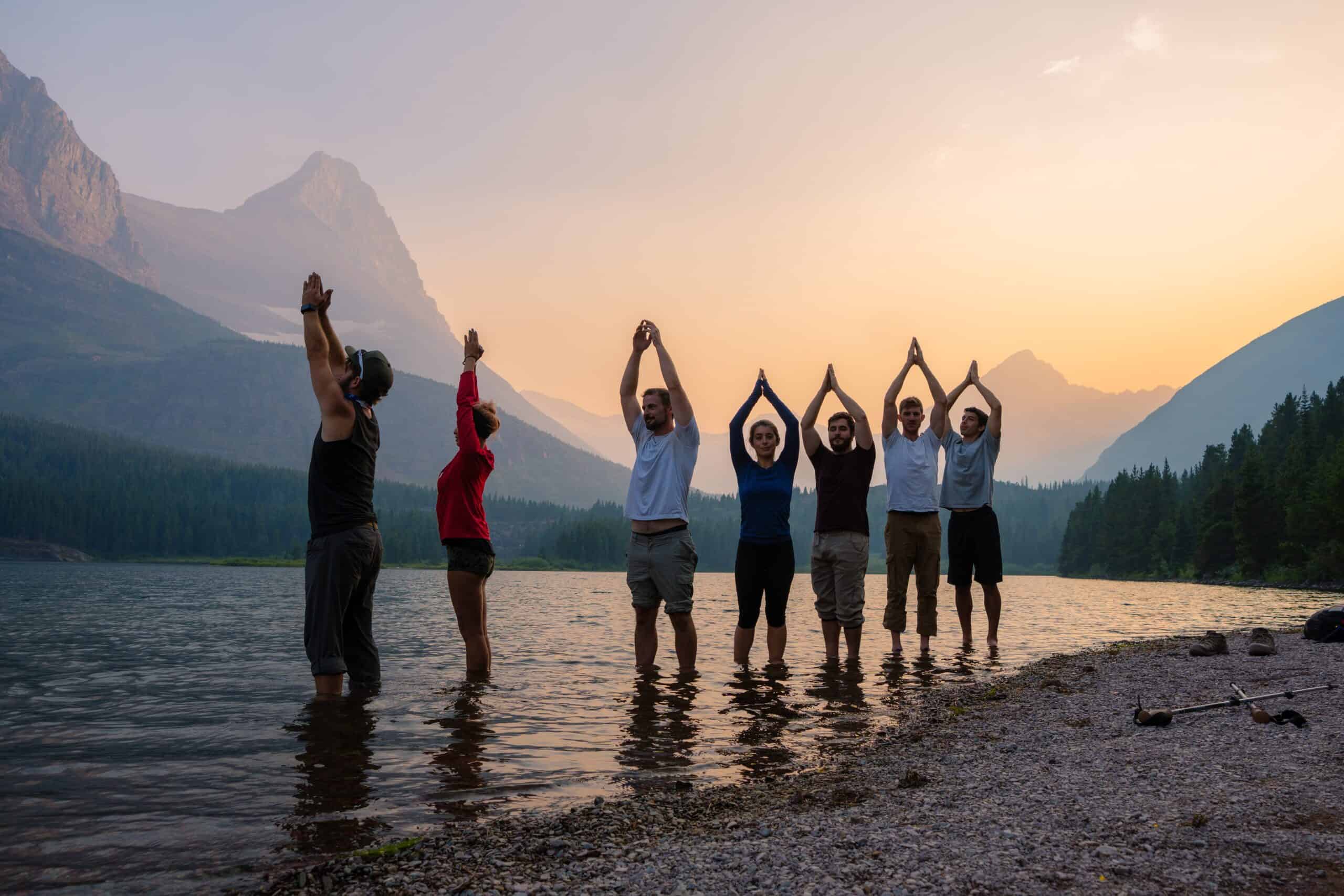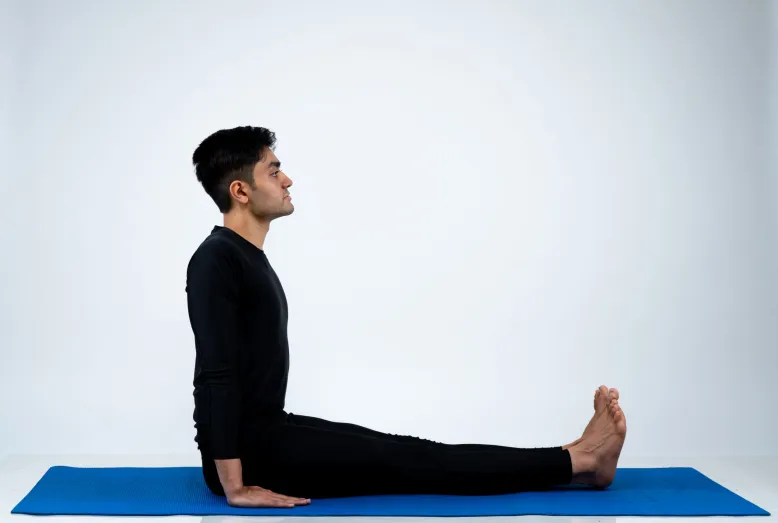Padmasana is also known as the Lotus Pose. The benefits of Padmasana Are Beyond It improves flexibility, joint strength, digestion, relaxation, focus, meditation, and spiritual connection. It improves overall health and vigor by supporting correct spinal alignment.
Physical Benefits of Padmasana
- Padmasana is known for increasing flexibility, especially in the hips, knees, and ankles. As the practitioner progresses deeper into the posture, the muscles and ligaments surrounding the joints expand, progressively increasing their range of motion. This enhanced flexibility not only helps with advanced yoga asanas, but also improves overall mobility in daily activities.
- Padmasana’s position encourages a straight and erect spine, strengthening back muscles and improving posture. By sitting tall in the position, the practitioner activates the core muscles, decreasing tension on the lower back and promoting proper spinal alignment. Regular Padmasana practice can assist with bad posture concerns including rounded shoulders and forward head posture.
- Padmasana improves digestion by compressing the belly, leading to better digestion and excretion. As the practitioner sits with the spine upright and the pelvis anchored, the digestive organs get a light massage, which assists in effective food processing and nutritional absorption. This is especially good for people who suffer from digestive disorders including bloating, constipation, or indigestion.
- Padmasana helps normalize blood pressure by relaxing and calming the nervous system. Deep and attentive breathing in this posture activates the parasympathetic nervous system, resulting in a relaxation response that counteracts the effects of stress and anxiety. Over time, frequent Padmasana practice may help to maintain appropriate blood pressure levels.
- Padmasana promotes improved circulation of blood and energy in the body. The posture promotes general circulation by anchoring the pelvis and elongating the spine, allowing blood to flow to the lower limbs while lowering the danger of edema. Improved blood circulation ensures that important nutrients and oxygen reach all cells, boosting overall health and energy.
Mental and Emotional Benefits of Padmasana
- Padmasana is known for its ability to settle the mind and promote clarity. The attention necessary to maintain the posture, along with focused breathing, serves to calm the mind, resulting in a sensation of inner peace and tranquility. Individuals coping with tension, worry, or racing thoughts may benefit from practicing Padmasana on a daily basis.
- Padmasana’s contemplative aspect makes it a powerful stress-reduction and relaxation technique. Deep breathing and mindfulness techniques throughout the posture increase the body’s relaxation response, which counteracts the effects of stress chemicals like cortisol. This can lead to lower overall stress levels and a greater sense of well-being.
- Padmasana promotes mental discipline, improving attention and focus. As the practitioner sits in the posture with a calm body and mind, they gain the capacity to focus their attention inside and away from distractions. This increased attention improves not just yoga practice but also daily life, enhancing productivity and cognitive performance.
- Regular practice of Padmasana can promote emotional balance and resilience. The posture helps practitioners manage life’s problems with greater ease and grace by instilling inner calm and serenity. Furthermore, the introspective character of Padmasana promotes self-awareness and self-reflection, helping people to process and release pent-up emotions in a healthy way.
Spiritual Benefits of Padmasana
Padmasana has always been linked to spiritual awakening and higher realms of awareness. In yogic philosophy, the Lotus Pose is said to stimulate the energy centers known as chakras, namely the root chakra (Muladhara) and the crown chakra (Sahasrara). By sitting in Padmasana with a straight spine and calm body, practitioners can encourage the passage of prana (life force energy) via these energy centers, resulting in a stronger connection with the divine.
Padmasana is a good position for meditation owing to its stability and grounding qualities. The symmetrical alignment of the body in the posture promotes balance and stability, allowing practitioners to sit comfortably for long periods of time without discomfort or distraction. This makes Padmasana ideal for improving one’s meditation practice and reaching higher realms of awareness.
Padmasana, a yoga pose, is said to awaken the dormant Kundalini energy located at the base of the spine. Sitting in the Lotus Pose and practicing pranayama (breath control) and meditation methods, practitioners can gradually awaken and climb the Kundalini energy through the center energy channel (Sushumna), leading to spiritual change.
Conclusion
Finally, Padmasana (Lotus Pose) has several physical, mental, and spiritual advantages. From better flexibility and posture to increased mental clarity and spiritual enlightenment, this renowned yoga stance has the ability to impact practitioners’ lives on several levels. Whether you are a seasoned yogi or a newbie on the road, including Padmasana into your practice may result in significant beneficial changes, promoting physical vigor, emotional well-being, and spiritual development. As you begin your journey with Padmasana, may you discover balance, tranquility, and inner harmony along the road.
Frequently Asked Questions?
Which chakra is activated by Padmasana?
Padmasana is a yoga pose that activates the Muladhara Chakra, the root chakra, which is associated with grounding, stability, and security. By firmly grounding the body on the earth and elongating the spine, Padmasana awakens and balances the root chakra’s energy, promoting safety, trust, and connection to the earth. It may also influence the activation of other chakras, such as the Svadhisthana and Manipura.
How long should you sit in Padmasana?
Padmasana, or Lotus Pose, is a pose that requires patience, mindfulness, and exploration. Beginners should start slowly and listen to their body’s signals to avoid discomfort. Gradually increase the duration of Padmasana practice, starting with 1-2 minutes and gradually increasing to 5-10 minutes or longer. If needed, use props like cushions or blankets to support your hips and knees. Cultivate mindfulness and awareness of breath, body sensations, and thoughts to enhance the pose’s benefits. There is no one-size-fits-all answer to Padmasana duration, but with consistent practice, you can gradually build strength, flexibility, and endurance, allowing you to sit comfortably for longer periods.
Is Padmasana good for the knees?
Padmasana, or Lotus Pose, can strengthen and stabilize the knee joint by improving flexibility and circulation. It requires a significant degree of flexibility in the knees and hips, which can contribute to better knee mobility and function. However, it is essential to approach Padmasana mindfully and avoid forcing the pose, especially if experiencing discomfort or strain. Pre-existing knee conditions should be considered when practicing Padmasana, and modifications may be necessary. Warming up and gently stretching the knees and hips before attempting the pose can help loosen tight muscles and improve joint mobility. For those with knee injuries or chronic pain, consulting a healthcare professional or physical therapist is recommended. Overall, Padmasana can be beneficial for knee health when practiced mindfully and with proper alignment.
Who should avoid Padmasana?
Padmasana: Health and Safety Considerations
• Knee or Ankle Injuries: Padmasana can exacerbate existing injuries or impede healing.
• Hip Flexibility Issues: The pose requires significant hip flexibility, which may be challenging for individuals with tight hips or limited range of motion.
• Recent Hip Replacement Surgery: Padmasana may put undue stress on the hip joint and compromise the surgical site.
• Pregnancy: Pregnant individuals should avoid Padmasana due to the pressure it places on the abdomen and pelvis.
• Severe Lower Back Pain: The pose requires a straight and erect spine, which may exacerbate existing back issues.
• High Blood Pressure: Padmasana can help regulate blood pressure levels, but those with uncontrolled high blood pressure should avoid holding the pose for extended periods.
• Recent Knee or Ankle Sprains: Individuals recovering from sprains should avoid putting weight on the affected joints in Padmasana.
• Discomfort or Pain: If experiencing discomfort or pain, it’s essential to modify or discontinue the pose as needed.





No Comments